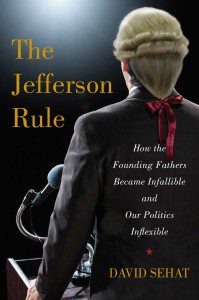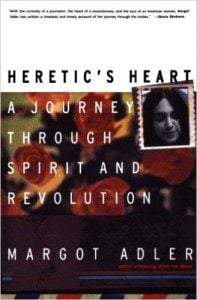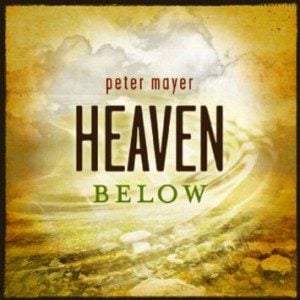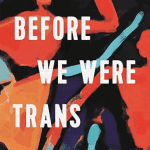Inconsistency: Since 1978, less than 1% of Maryland’s 13,000+ murders resulted in a death sentence. Are those individuals truly the “worst of the worst” or simply those with the worst lawyers, wrong skin color or wrong geographic location? Most capital prosecutions occur in Baltimore County, which is more than 13 times more likely to seek the death penalty than Baltimore City. However, only 6% of Maryland’s homicides occur in Baltimore County.
Racism: Blacks charged with killing a white victim in Maryland are 2 1/2 times more likely to be sentenced to death than white who kill whites, and 3 1/2 times more likely than blacks who kill blacks. Maryland’s death row has been reserved exclusively for white homicide victims, even though more than 75% of the state’s victims are black.
Poverty: Every one of Maryland’s death row was too poor to hire his own attorney.
Expense: Every capital case prosecuted in Maryland costs $3 million, approximately 3 times more than a murder trial seeking life imprisonment. Around 70% of these costs are incurred at the trail phase.
Risks of Executing an Innocent: More than 80% of death sentences in Maryland are overturned on appeal. Kirk Bloodsworth, the first DNA exoneree in the nation, was from Maryland. He spent 9 years in prison for a rape and murder he did not commit, 2 of those years on death row. Anthony Gray was threatened with the death penalty for a 1991 Calvert County murder he did not commit. To avoid execution, Gray confessed and served 7 years of a life sentence before he was exonerated, almost 18 months after someone else was convicted of murder.
— Issues in Maryland’s Death Penalty
In response to the section in my last post about nonviolent alternatives to war, I had some good conversation about the understandable question of how realistic such a possibility is. My first response is that the large-scale success of the movements led by figures such as Martin Luther King, Jr. for Civil Rights and Mohandas Gandhi for independence lead me to think that nonviolence is far more effective tool for societal transformation than is often recognized. Nonviolent activism is a ripe for present and future use, not just something King and Gandhi and others found was useful in one situation decades ago. If nonviolence activism had even one-tenth the funding and personnel that we spend on the Military-Industrial Complex, our whole conception might begin to change about what is possible in the struggle for social justice. As the saying goes, “If the only tool you have is a hammer, you treat everything as if it were a nail.” There are obvious uses for hammers and for the military, but we desperately need to add the tool of nonviolent activism to our society’s tool belt.
My larger point is that when I reflect on the social justice issues of our day, one phrase that keeps coming to

mind for me is “Another world is possible.” When I consider that we have not yet reached the 100th anniversary of women voting in the United States, I’m freshly convinced that change can happen; another world is possible. When I remember that a majority of Maryland voters approved the DREAM Act, I feel a surge of hope that another world is possible — a world of greater justice and fairness for immigrants. Remembering that a majority of Maryland votes approved Same-Sex Marriage Equality, inspires me to see that another world is possible — a world of greater justice and fairness for all people, regardless of whom they love. Even the horrifying statistics around the Prison-Industrial Complex — or the unspeakable horror of Newtown — make me hopeful that perhaps we are reaching a tipping point in which we as a society have had enough, and that a critical mass of people will demand that another world become possible. We don’t have to accept the status quo. The most recent statistics I’ve seen are that 2218 people have died in the U.S. from gun violence just in month since the Newtown massacre. It doesn’t have to be this way. There are concrete ways to reduce gun violence. As St. John says, “You may say I’m a dreamer, but I’m not the only one.” (That’s St. John Lennon, of course!) And one of the reasons so may UUs and so many other people love John Lennon’s song “Imagine” is that the lyrics challenge is the visualize and feel that another world is possible.
And one of the reasons that I wanted to post about the death penalty is that we seem to be on the edge of making another world possible here in Maryland. As The Washington Post reported this past week:
Sen. Robert A. Zirkin (D-Baltimore County) said Wednesday night that he plans to vote in favor of repealing Maryland’s death penalty, which means the measure now has the support of a majority of members on a key committee. Repeal legislation has died in recent years in the Senate Judicial Proceedings Committee, which [was] scheduled to vote Thursday on the latest version of the bill sponsored by Gov. Martin O’Malley (D). A majority vote by the committee would allow the bill to move to the full Senate, where there appears to be enough votes for passage.
The latest is scheduled debate on the death penalty repeal bill on Friday morning, March 1, 2013 in the Maryland Senate. The final vote on the bill will now likely come next week. (For more, visit http://www.mdcase.org/.)
Without speaking in depth with each reader of this post about your personal experience with violent crime and the death penalty, I have no way of knowing how the possibility of abolishing the death penalty in Maryland feels to you. Speaking for myself, my perception of this potential legislative victory in Maryland is strongly effected by the three years I spent in seminary in Fort Worth, Texas — where 493 men have been executed since 1982, when the State of Texas reinstituted Capital Punishment. The most recent of these executions was less than 72 hours ago on Thursday, February 21. All of those executions happened at the State Penitentiary in Huntsville, Texas, which is less than three hours from where I spent three years in divinity school. For me, having worked on and off for three years in Texas — to little avail — to raise awareness about the inconsistency, racism, poverty, expense, and risks inherent in death penalty, the possibility of a majority of state legislators voting to abolish the death penalty in the state in which I live makes me feel like another world is possible. And I don’t want anyone to miss the significance of this potential moment that may be part of a growing trend against the death penalty.
Texas fortunately is an outlier. Overall,
- [T]he number of death row inmates executed [in the U.S.] in 2012 remained unchanged from 2011 at 43….
- Last year Connecticut upped to 17 the number of states to repeal the death penalty….
- [And only] nine states executed death row inmates in 2012 — led by Texas, which executed 15 people. Overall last year, four states — Texas, Oklahoma, Mississippi and Arizona — carried out more than three-quarters of all state executions. The year before, 13 states used the death penalty.
Back in 2010, the retired Supreme Court Justice John Paul Stevens reviewed David Garland’s book Peculiar Institution: America’s Death Penalty in an Age of Abolition.
In the concluding paragraph of the review, Stevens echoed his former colleague Justice Byron White in saying that the death penalty represents “the pointless and needless extinction of life with only marginal contributions to any discernible social or public purposes.” At the time, I remember thinking that sums up my view well.
Part of how I arrived at that view was learning about how many people have been saved from wrongful execution. Setting aside the number of people that we may never know who have been wrongly executed in the past, we do know that “Since 1973, some 130 death row inmates have been exonerated, largely through the use of DNA evidence. Yet not every state allows death row inmates access to such testing.” That’s 130 human beings on death row, in line to be executed, who were exonerated. Some of you may know the story of Michael Morton, who is an American citizen wrongfully convicted in Texas of murdering his wife. Morton served 25 years in prison until indisputable proof of his innocence led to his release on October 4, 2011.
But I think the real turning point for me regarding Capital Punishment was in college when I first heard stories of people involved with the organization “Murder Victims’ Families for Reconciliation” (http://www.mvfr.org). Story after story spoke of the false hope of the death penalty: after years of waiting through appeals that brought more focus to the perpetrator than to the victim, the actual day of execution did not bring the closure they sought. They discovered that underneath their anger and grief, what they wanted was not the death of the killer. What they really wanted was their loved one back. And the false promise of the death penalty had delayed their grieving process. For many theologians the false promise of the death penalty is related to a larger phenomenon sometimes known as the “Myth of Redemptive Violence” — that violence, even the seemingly justifiably fair revenge of an “eye for an eye” or a “life for a life,” almost inevitably sows the seeds of future violence.
A classic bumper sticker makes this point succinctly: “Why do we kill people who kill people to show that killing people is wrong?” But Martin Luther King, Jr., in the same quote I shared with you last week, says more eloquently that:
The ultimate weakness of violence is that it is a descending spiral…. Through violence you may murder the liar, but you cannot murder the lie, nor establish the truth. Through violence you may murder the hater, but you do not murder hate…. Hate cannot drive out hate: only love can do that.
There are, of course, some murder victim’s families that are deeply grateful for the execution of the perpetrator who killed their loved one. But the testimonies from Murder Victim’s Families for Reconciliation have convinced me that another world is possible: it is possible to stumble and grope our way forward to peace and hope, even in the wake of senseless murders.
To say more about what I mean, when I posted a few weeks ago about our nation’s epidemic of mass incarceration, I said, that we needed a shift from a Criminal Justice System primarily characterized by Punitive Justice to one primarily characterized by Restorative Justice — a focus less on punishment than on rehabilitation, restoring right relationship for all concerned, and on repairing the problems that contribute to crimes being committed in the first place.
As an example of what that looks like, The New York Times Magazine ran a feature article back in January on “Can Forgiveness Play a Role in Criminal Justice?” It tells the story of the parents of Ann Grosmaire, who in 2010 at age 19, was shot and killed by her fiancee Conor McBride, who was also 19-years-old at the time. They had been dating for three years. A fight between them escalated from hurtful words to murder when Conor reached for a shotgun that was kept in the house.
In working through their anger and grief, the Grosmaires learned about the Restorative Justice paradigm, and sought to use it for Conor’s sentencing because they came to believe that it is what their daughter would have wanted. In a Restorative Justice approach,
Typically, a facilitator meets separately with the accused and the victim, and if both are willing to meet face to face without animosity and the offender is deemed willing and able to complete restitution, then the case shifts out of the adversarial legal system and into a parallel restorative-justice process. All parties — the offender, victim, facilitator and law enforcement — come together in a forum sometimes called a restorative-community conference. Each person speaks, one at a time and without interruption, about the crime and its effects, and the participants come to a consensus about how to repair the harm done.
Of course, you can’t repair the harm done in murder. And the Grosmaires’ case was featured in the Times because it is highly unusual for Restorative Justice to be attempted in the case of murder. As a Restorative Justice advocate said, “We do burglaries, robberies. No gun charges, no homicides. No rape.”
In the normal Punitive Justice paradigm, Conor would have likely have received 40 or more years in prison, so that he would be 60 years or older upon his release. Instead he received, “20 years, plus probation.” The prosecutor has said frankly that, “if Conor gets out in 20 years and goes and kills his next girlfriend, I’ve screwed up terribly. So I hope I’m right.” The Restorative Justice advocate said:
I’m not worried about him getting out in 20 years at all. We got to look more deeply at the root of where this behavior came from than we would have had it gone a trial route — the anger issues in the family, exploring the drama in their relationship, the whole conglomeration of factors that led to that moment. There’s no explaining what happened, but there was just a much more nuanced conversation about it, which can give everyone more confidence that Conor will never do this again. And the Grosmaires got answers to questions that would have been difficult to impossible to get in a trial.
I’ve only given you a few highlights of this story. I commend the full article to you.
The larger point is that the possibility of repealing the death penalty in Maryland says to me that another world is possible. We don’t have to accept that the current state of the world is “just the way it is.” Methods of transforming people and conflict through nonviolent activism and Restorative Justice show me that together we can create a world that is more peaceful, free, and just.
In 2006, after a tragic shooting at an Amish schoolhouse in Pennsylvania, the family members of the victims, went immediately to comfort the family of the assassin. They sought not to condone his egregious transgression. But instead of seeking revenge, they sought to restore right relationship and stop the cycle of violence.
This radical act was made possible by the Amish communities commitment to practicing forgiveness. As you’ve heard me say before, “Practice doesn’t make perfect. Practice makes permanent.” And the Amish commitment to practicing forgiveness in all cases, from little in fractions to the largest crime, led them to reflexively seek out the family of the assassin — to stop the cycle of violence, to do everything in their power to stop a similar tragedy from every happening again. But they didn’t seek to do so with violence or with revenge. They sought to use the transformative power of radical forgiveness..
Another world is possible, but we have to put time, people, and resources into practicing alternatives to violence such as nonviolent activism, Restorative Justice, and radical forgiveness so that we get better at these alternatives to violence. And when I say that another world is possible, I don’t mean hope in the next world or an afterlife. I mean the hard, but hopeful of transforming our world. This one earth.
Imagine — as St. John said, Imagine:Imagine that another world is possible.
To learn more and to take action, visit:
Notes
1 “Issues in Maryland’s Death Penalty” — compiled from the Maryland Commission on Capital Punishment, Final Report to the General Assembly, Dec. 12, 2008; An Empirical Analysis of Maryland’s Death Sentencing System with Respect to the Influence of Race and Legal Jurisdiction, Univ. of Maryland, 2003; Maryland Citizens Against State Execution (http://www.mdcase.org).
2 To read or listen to the previous sermons, mentioned, visit http://www.frederickuu.org/sermons.
3 For more information about the use of nonviolent activism in recent decades, visit http://www.aforcemorepowerful.org/resources/.
4 For Slate’s estimate of gun-related deaths since Newtown, see http://www.slate.com/articles/news_and_politics/crime/2012/12/gun_death_tally_every_american_gun_death_since_newtown_sandy_hook_shooting.html.
5 The St. John Lennon joke is not original to me. I’ve heard it a number of times, and do not know the origin.
6 For more on Zirkin’s vote and the implications, see http://www.washingtonpost.com/local/md-politics/zirkin-announces-support-for-death-penalty-repeal-bolstering-prospects-for-passage/2013/02/20/fd68b7fa-7bd2-11e2-9a75-dab0201670da_story.html.
7 On Texas executions, see http://www.tdcj.state.tx.us/stat/dr_executed_offenders.html.
8 The way in which we attempt to create “another world” is vitally important, given so-called Law of Unintended Consequences: “In 1972, in Furman v. Georgia, the Court effectively invalidated all forty-one existing state and District of Columbia capital punishment statutes. Rather than advancing Justice Goldberg’s purported campaign, Furman, in Garland’s view, was a failure: a temporary moratorium on executions that energized and motivated a powerful pro–death penalty movement.” At the same time, stopping this practice is important. In his opinion in Furman, Justice Stewart observed that the death sentences before him were “cruel and unusual in the same way that being struck by lightning is cruel and unusual.” The constitutional remedy to deaths being “so wantonly and so freakishly imposed.” (Both of these quotes are from http://www.nybooks.com/articles/archives/2010/dec/23/death-sentence/?pagination=false.)
9 “[T]he number of death row inmates executed [in the U.S.] in 2012” — “Death penalty grows rarer in U.S.,” available at http://www.religionnews.com/2012/12/18/death-penalty-grows-rarer-in-u-s//.
10 The review of Garland’s book is available at http://www.nybooks.com/articles/archives/2010/dec/23/death-sentence/?pagination=false..
11 “Since 1973, some 130 death row inmates have been exonerated” — from http://www.washingtonpost.com/wp-dyn/content/article/2010/12/26/AR2010122601782.html.
12 The Michael Morton details are from this powerful article: http://www.texasmonthly.com/story/innocent-man-part-one. http://www.huffingtonpost.com/bennett-l-gershman/ken-anderson-court-of-inq_b_2664315.html.
13 For a similar story in Maryland, see “The fight for death penalty’s repeal: New Market woman behind push despite daughter’s murder,” available at http://www.fredericknewspost.com/sections/news/display_comments.htm?StoryID=146431#.USd2NVpoRvk.
14 For more information, see Howard Zehr’s The Little Book of Restorative Justice and Daniel W. Van Ness and Karen Strong’s Restoring Justice, Fourth Edition: An Introduction to Restorative Justice.
15 See also The Alternatives to Violence Project (AVP), a multi-cultural volunteer organization of Marylanders dedicated to reducing interpersonal violence in our society. The AVP program offers experiential workshops that empower people to lead nonviolent lives through affirmation, respect for all, community building, cooperation and trust: http://www.avpmd.org/.
The Rev. Dr. Carl Gregg is a trained spiritual director, a D.Min. graduate of San Francisco Theological Seminary, and the minister of the Unitarian Universalist Congregation of Frederick, Maryland. Follow him on Facebook (facebook.com/carlgregg) and Twitter (@carlgregg).
Learn more about Unitarian Universalism:
http://www.uua.org/beliefs/principles/index.shtml













